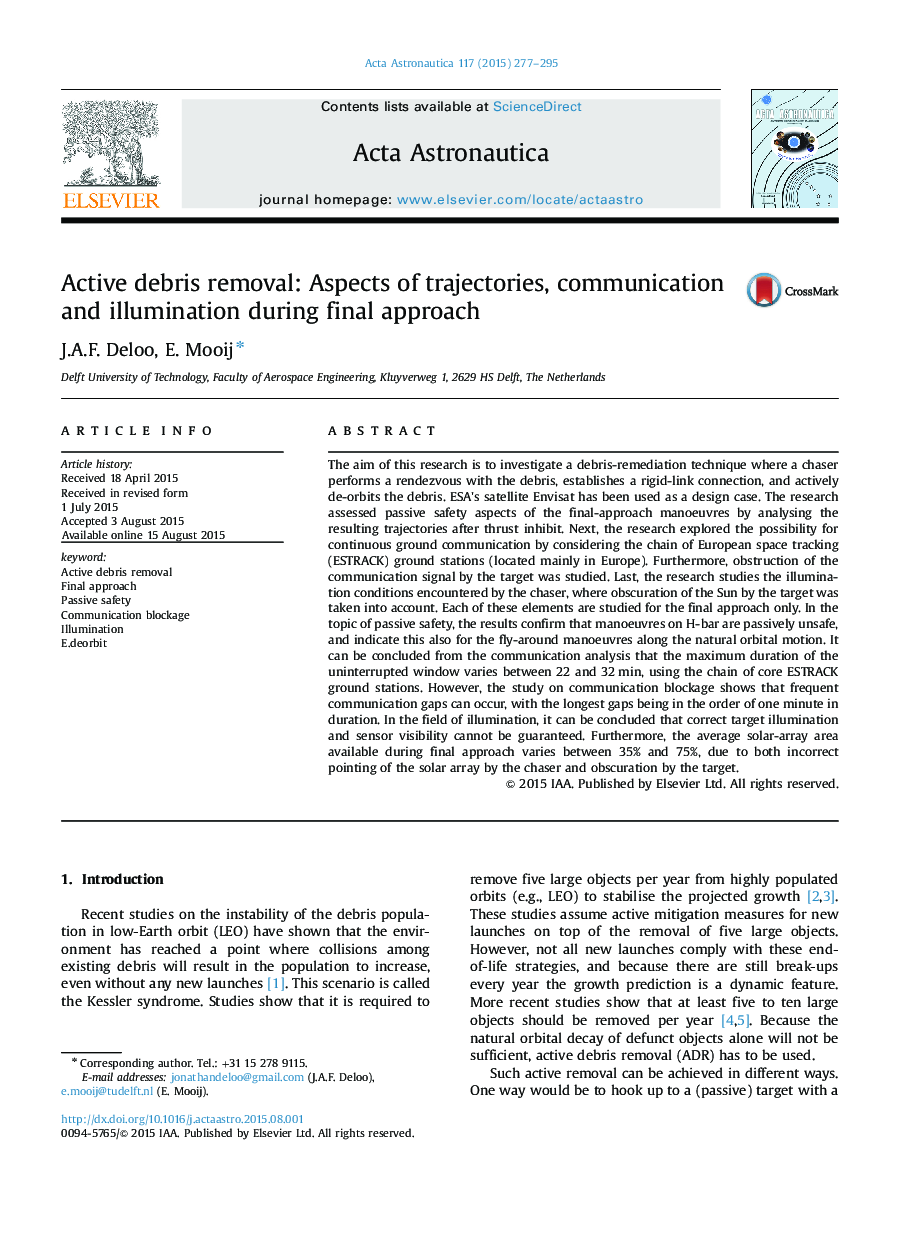| کد مقاله | کد نشریه | سال انتشار | مقاله انگلیسی | نسخه تمام متن |
|---|---|---|---|---|
| 1714342 | 1519937 | 2015 | 19 صفحه PDF | دانلود رایگان |
• Passive safety and thrust implications during non-cooperative rendezvous for ADR.
• Continuous communication and illumination issues during non-cooperative rendezvous.
• Continuous communication varies between 22 and 34 min (maximum 1 min obstruction).
• Solar-array illumination is dominated by poor pointing of the solar array.
• In the vicinity of the target (<10m) obstruction from Sun can be significant.
The aim of this research is to investigate a debris-remediation technique where a chaser performs a rendezvous with the debris, establishes a rigid-link connection, and actively de-orbits the debris. ESA׳s satellite Envisat has been used as a design case. The research assessed passive safety aspects of the final-approach manoeuvres by analysing the resulting trajectories after thrust inhibit. Next, the research explored the possibility for continuous ground communication by considering the chain of European space tracking (ESTRACK) ground stations (located mainly in Europe). Furthermore, obstruction of the communication signal by the target was studied. Last, the research studies the illumination conditions encountered by the chaser, where obscuration of the Sun by the target was taken into account. Each of these elements are studied for the final approach only. In the topic of passive safety, the results confirm that manoeuvres on H-bar are passively unsafe, and indicate this also for the fly-around manoeuvres along the natural orbital motion. It can be concluded from the communication analysis that the maximum duration of the uninterrupted window varies between 22 and 32 min, using the chain of core ESTRACK ground stations. However, the study on communication blockage shows that frequent communication gaps can occur, with the longest gaps being in the order of one minute in duration. In the field of illumination, it can be concluded that correct target illumination and sensor visibility cannot be guaranteed. Furthermore, the average solar-array area available during final approach varies between 35% and 75%, due to both incorrect pointing of the solar array by the chaser and obscuration by the target.
Journal: Acta Astronautica - Volume 117, December 2015, Pages 277–295
